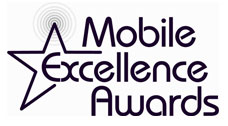Power consumption is one of the bugaboos of video on the mobile platform. Video sucks up power, and batteries for mobile platforms have real limits. That’s a conundrum that Actimagine, a French company, says it has solved.
Actimagine’s patented video codec, Mobiclip, offers VGA resolution at 30 fps…for 7.5 hours on a Nokia N73. That’s an estimated four times longer than MPEG4’s 90 minute duration and eight times more than H.264. Mobiclip is compatible with all open operating systems, including Windows Mobile, Linux, Symbian, Brew and Palm OS.
How do they do it? Henri Linde, Actimagine’s president, Americas, defines it simply. “I describe it as changing all the multiplication and division to addition and subtraction,” he said. “That means that because the algorithm’s built on simpler actions, it uses substantially less power.” Mobiclip files are smaller; MPEG4 files need to be 30 per cent bigger for the same picture and sound quality and so consume more memory on a mobile device.
Up until now, in the U.S., Actimagine, which was founded in Paris in 2003, has provided power consumption for Game Boys and Fisher Price toys. In Europe, however, Actimagine has been making inroads into video for the mobile platform, via promotions for Nokia’s N series phones. Nokia offers a DVD-quality film, stored on an Acimagine miniSD card, as an incentive to buy the phone. The user simply inserts the card into the phone and clicks on an icon to play the movie. Paramount and Sony have participated, with movies including “The Da Vinci Code” and “Casino Royale.”
In May, Nokia, Studio Canal and The Phone House offered a 1-GB Acimagine miniSD card of a popular French movie, “Prête-moi ta main,” for 1 Euro, for those purchasing a new Nokia N73 (and later the Nokia N95 and N76). Successful marketing of the handset included an emphasis that buyers would be able to watch the entire full-screen movie without recharging their batteries and, since the film uses only 350 MB, they’d have 650 MB of free memory on which to store photos, music and videos.
That model sounds compelling enough for the U.S. market, but Actimagine has a bigger plan. “We’re going to offer the full backbone to deliver video,” says Linde. “We don’t just want to be a video codec provider, but also offer transaction management, content management and DRM.” Video will live on a server, which Actimagine will download to users’ PCs. The codec player will download with the video content or be embedded in the handset.
The Motorola Media Monster Z8 will have an embedded Mobiclip player and will come with a miniSD card with “The Bourne Identity.” “With Nokia, the player is on the miniSD cards,” says Linde. “With the Motorola, the player is actually in the phone.” Linde also notes that, with the Nokia N series video-out plug, Actimagine provides a cable to play the cell phone content on the TV receiver. At QVGA resolution, a movie won’t look great on your 42-inch plasma, but the basic concept is right on. “You can buy or rent movies on your cell phone and then watch it at night on your hotel TV,” explains Linde.
For now, the download model will continue to develop, says Linde, who also notes that the company is going to carriers with an offer for streaming. The company, which will get a second round of funding this fall from GRP Partners investment fund, is currently in discussion with numerous major content owners.








